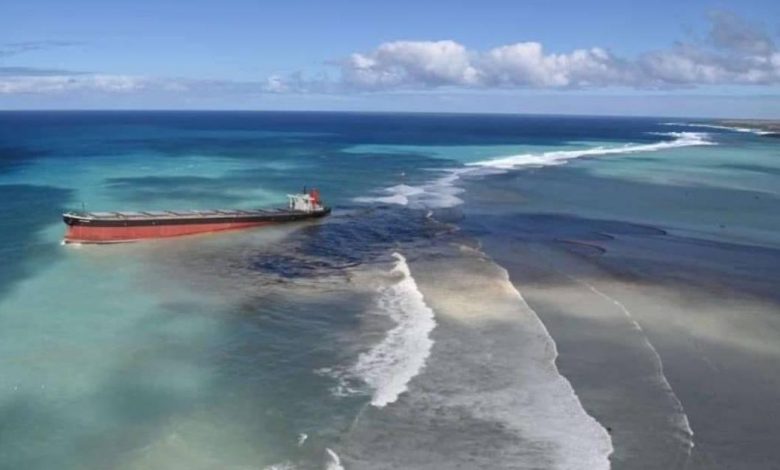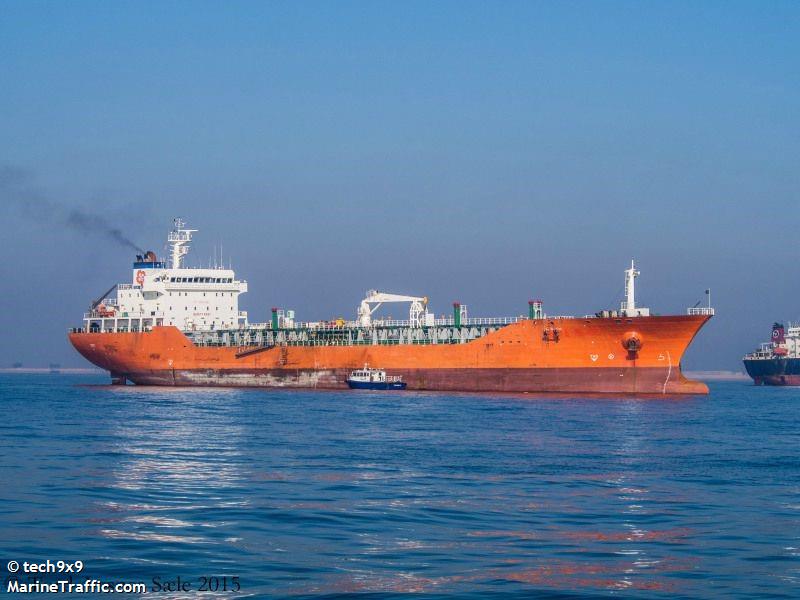Mauritius faces up to its worst environmental crisis as oil slick snakes around the south of the island

An environmental crisis is playing out in the Indian Ocean where a grounded Panamanian-flagged newcastlemax is spewing bunker fuel onto the pristine shores of southeastern Mauritius.
The 203,000 dwt Wakashio bulk carrier, which ran aground on a reef July 26, has a gash on its starboard hull through which significant tracts of heavy fuel oil are poisoning the local environment.
The ship, owned by Japan’s Nagashiki Shipping, was en route from China to Brazil when it ran aground with 3,800 tonnes of bunker fuel onboard.
“We are in an environmental crisis situation,” admitted the environment minister, Kavy Ramano last night, while the fishing minister, Sudheer Maudhoo, said: “This is the first time that we are faced with a catastrophe of this kind and we are insufficiently equipped to handle this problem.”
This is the first time that we are faced with a catastrophe of this kind and we are insufficiently equipped to handle this problem
Nearby nature reserve Blue Bay Marine Park has been badly damaged with coral and rare turtles smothered in oil while schools in the vicinity are closed because of the noxious smell from the bunker fuel.
Efforts are being made to try and pump out the remaining fuel from the ship while local politicians have called for international help to contain the damage.
The French island of Reunion, which lies 200 km west from Mauritius, has been put on alert as the slick meanders through the ocean.

 bulk carrier, which
bulk carrier, which
That spill is nothing! The amount is small and can be recovered very easily. The army must be mobilized and all hands put to work!
Enough of whining!
You’re so ignorant! It is a very small island with limited resources and they are recovering from the pandemic. It is not easy to quickly clean this mess up and they have also taken too long to respond, partly due to the poor weather and probably some other issues.
Mauritius does not have a dedicated army that can be mobilised to fix it. The people of Mauritius have gathered at these sites and are trying their best to protect their island!
Before you comment, go read and research around it first!
Agree completely. The local people are doing their best, but it will take years for the sensitive lagoon environment to recover. Even those local volunteers who are putting their health at risk (in some cases scooping oil up with their bare hands and cutting off their hair to use as fillters) can only do so much – the rest has to be left to time and nature. A lagoon, where there’s minimal water flow, is nothing like the open sea, where a slick can be broken up quickly by wave action. Family members in the area are getting sick from the smell, schools are closed, you can’t escape this disaster in Mahebourg, Pointe d’Esny and Blue Bay. Fishermen have lost their livelihoods and people are so upset – it’s easy to forget the huge human cost of an incident like this.
Why did the government take so long to react? Complacency, because the previous two incidents, Angel 1 and Benita, miraculously didn’t result in a leak. Naivety, because they believed the assurances of the experts who said there was no leak (there was, right from the moment the ship hit the reef) and the ship was stable (as the stern disappears beneath the water, it clearly isn’t and never was).
So more than two weeks have been wasted. Where are the skimmers to help scoop off oil in the lagoon? Where are the pumps? Where is the barge for the waste oil?
And how realistic is it to wait for dead-calm conditions – as the salvors appear to be insisting on – when the reef is directly in the path of the prevailing wind and waves that have travelled across thousands of miles of ocean?
In the meantime we still know nothing about the circumstances of this grounding, who approved a disastrous passage plan, the nationality (at least) of the Master, the plans of the salvors Smit, the timeline for the ship to be rremoved.
It is clear that the dilettante writes an irresponsible person, far from knowing nature and its recovery after such cases… How can you write this, shame…
Are you f..k serious. You have no care for the ecology this has destroyed. It’s all about money and greed. The company said the same thing when oil spilt in 2006… it would sink to the sea bed. What about the animals who live there that this will destroy.
Local fishermen are already fighting fuel using their boats and I see that they are very, very effective.
What are neighboring countries going to do to help?